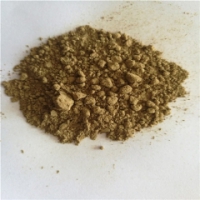Professional industry ceramic supplier, silicon nitride, silicon carbide, aluminum nitride and any other kinds of ceramics.
What is magnesium nitride?
Magnesium nitride is an inorganic compound with a chemical formula of Mg3N2, which belongs to the cubic crystal system. At room temperature, pure magnesium nitride is yellow-green powder but contains some magnesium oxide impurities, and magnesium nitride is gray. Like many metal nitrides, magnesium nitride reacts with water to form ammonia, which is often used as a catalyst.
What does magnesium nitride look like?
Magnesium nitride is usually described as yellow, and none of us has seen a yellow residue after the first heating. Students usually notice the lack of yellow products, and then ask or silently skip the second step, without significant reduction.

Is magnesium nitride soluble in water?
Magnesium nitrate is a highly water-soluble source of crystalline magnesium, compatible with nitrates and low (acidic) pH compounds. Magnesium nitrate compounds are generally soluble in water. Nitrate substances are also oxidants.
Overview of magnesium nitride Mg3N2
Magnesium nitride with the chemical formula Mg3N2 is an inorganic compound of magnesium and nitrogen. Under normal temperature and pressure, it is a green-yellow powder. Magnesium nitride is an inorganic compound composed of nitrogen and magnesium, with a molecular formula of Mg3N2 and a molecular weight of 100.9494. Belongs to the cubic crystal system. Like many metal nitrides, magnesium nitride reacts with water to form ammonia. To prepare magnesium nitride, the magnesium strip can be burned in nitrogen. Often used as a catalyst.
Application of magnesium nitride Mg3N2
High-purity magnesium oxide Mg3N2 application areas: Fields: High-purity magnesium oxide has excellent alkali resistance and electrical insulation at high temperatures, high thermal expansion coefficient, high thermal conductivity, and good light transmittance. It is widely used as high temperature and heat resistance materials . In the field of ceramics, it is used as a raw material for transparent ceramic crucibles and substrates in the field of electrical materials and electric fields, as a filler for magnetic devices, as a filler for insulating materials, and various carriers. The thermal conductivity of the ceramic substrate is more than twice that of magnesium oxide, and the loss of electrolyte is only 1/10 of that of magnesium oxide. It can also be used as a raw material for high-purity molten magnesium oxide, and can be chemically used as "analytical pure" magnesium oxide.
Application field of oxide nano-magnesium Mg3N2: N-oxide anus-magnesium has obvious small size effect, surface effect, quantum size effect and macro tunnel effect.After the modification, there is no agglomeration.It has many special optical functions, catalysis , Magnetism, mechanics, chemical engineering, etc. It has important application value and broad prospects, and is an important new material in the 21st century. Nano-magnesium oxide is widely used in electronics, catalysis, ceramics, petroleum products, coatings and other fields. Used in different products to play different roles. It is used as a flame retardant in the chemical fiber and plastic industries; it is used as a high-temperature dehydrating agent in the production of silicon steel plates, advanced ceramic materials, and electronic industry materials, and as a binder and additive in the industry. Chemical raw materials; radio industry high-frequency magnetic rod antennas, magnetic equipment fillers, insulating material fillers and various carriers; refractory fibers and refractory materials, magnesia chrome bricks, heat-resistant coating fillers, high-temperature insulation meters, power, cables, optical materials and smelting Steel; electrical insulating materials, manufacturing crucibles, electric furnaces, insulated pipes (tubular elements),
In the textile field, as the demand for high-performance flame-retardant fibers continues to increase, synthetic new high-performance flame retardants provide ideal materials for the development of functional fabrics. Nano-magnesium oxide is usually used in conjunction with wood chips and shavings to make refractory materials such as light weight, sound insulation, heat insulation, refractory fiberboard, and cermet. -Toxic, odorless, and small in addition, it is an ideal additive for the development of flame-retardant fibers. In addition, nano-magnesium oxide used for fuel has strong cleaning and corrosion inhibition capabilities, and has good application prospects in coatings.
Magnesium oxide is widely used in the field of semiconductor electronic packaging due to its excellent electrical, thermal and mechanical properties.
Price of Magnesium Nitride Mg3N2
The price of magnesium nitride Mg3N2 products will vary with random factors such as production cost, transportation cost, international situation and market supply and demand for magnesium nitride Mg3N2 products. Tanki New Materials Co., Ltd. aims to help various industries and chemical wholesalers find the cost of high-quality and low-cost nanomaterials and chemicals by providing a full set of customized services. If you are looking for magnesium nitride Mg3N2 products, please feel free to send an inquiry to get the latest prices of magnesium nitride Mg3N2 products.
Suppliers of Magnesium Nitride Mg3N2
As a global supplier of magnesium nitride Mg3N2, Tanki New Materials Co., Ltd. has extensive experience in the performance, application and cost-effective manufacturing of advanced engineering materials. The company has successfully developed a series of powder materials (titanium nitride, silicon nitride, titanium nitride, etc.), high-purity targets, functional ceramics and structural devices, and provides OEM services.
| Technical Parameter of Magnesium Nitride Mg3N2 powder: | ||||||
| Product Name | MF | Purity | Particle Size | Melting Point | Density | Color |
| magnesium nitride | Mg3N2 | 99% | 5-10um | 800℃ | 2.712g/ml | yellow brown |
| Chemical Composition of Magnesium Nitride Mg3N2 powder: | ||||||
| Mg3N2 | N | Mg | Si | O | C | Fe |
| 99% | 11% | balance | 0.00% | 0.20% | 0.05% | 0.15% |
